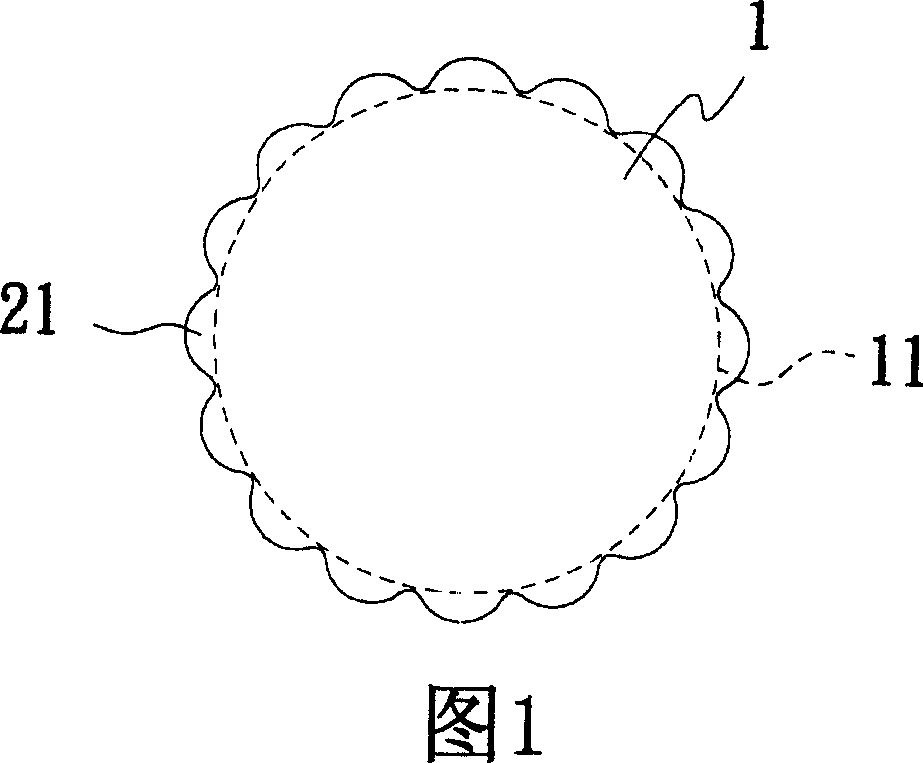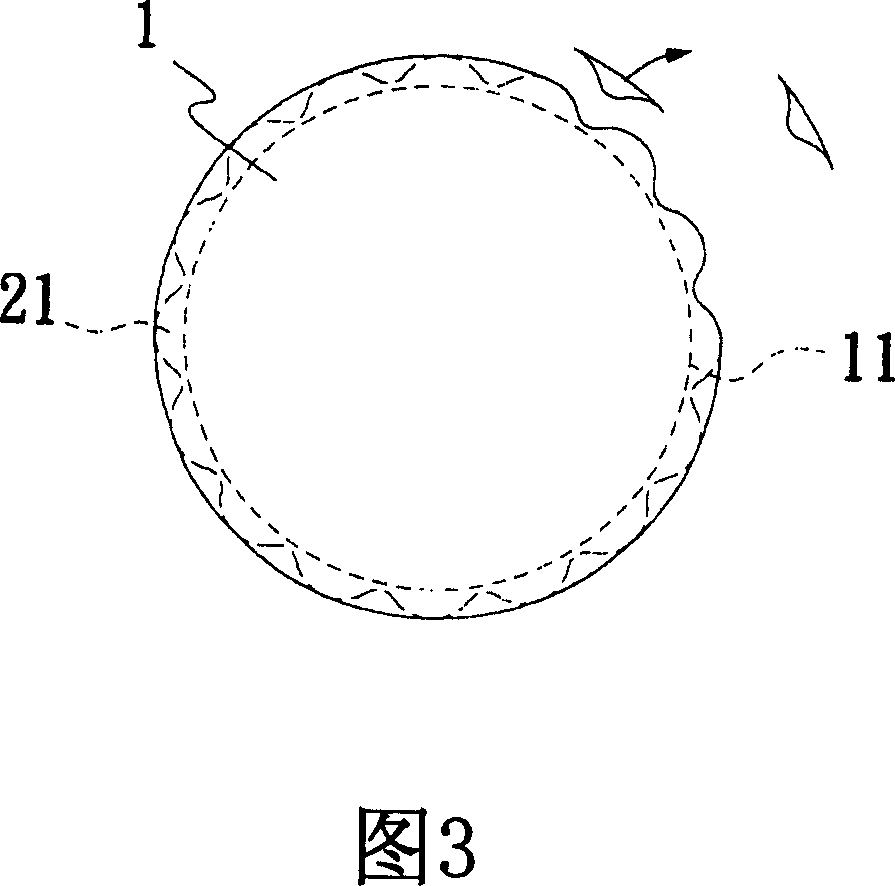Contact lens
A contact lens and eyeball technology, applied in glasses/goggles, optics, instruments, etc., can solve the problems of fragile structure, lack of consideration of tear foreign body sensation, and difficulty in wearing
- Summary
- Abstract
- Description
- Claims
- Application Information
AI Technical Summary
Problems solved by technology
Method used
Image
Examples
Embodiment Construction
[0025] In order to fully understand the purpose, features and effects of the present invention, the present invention will be described in detail through the following specific embodiments, and in conjunction with the accompanying drawings, as follows:
[0026] FIG. 1 and FIG. 2 are respectively a front view and a perspective view of a preferred embodiment of a contact lens of the present invention. As shown in the figure, a contact lens of the present invention may include: a main body 1 and an arc pattern 21 . Generally speaking, the diameter of the human eye is about 21 mm to 26 mm, the diameter of the cornea is about 11 mm to 12 mm, and the distance between the superior rectus muscle and the inferior rectus muscle is about 25 mm. The distance between the rectus muscle and the lateral rectus muscle is about 24mm, and the contact lenses commonly used in the market today, for hard contact lenses, have a diameter of about 8 mm to 11 mm, and for soft contact lenses , and its di...
PUM
 Login to View More
Login to View More Abstract
Description
Claims
Application Information
 Login to View More
Login to View More - R&D
- Intellectual Property
- Life Sciences
- Materials
- Tech Scout
- Unparalleled Data Quality
- Higher Quality Content
- 60% Fewer Hallucinations
Browse by: Latest US Patents, China's latest patents, Technical Efficacy Thesaurus, Application Domain, Technology Topic, Popular Technical Reports.
© 2025 PatSnap. All rights reserved.Legal|Privacy policy|Modern Slavery Act Transparency Statement|Sitemap|About US| Contact US: help@patsnap.com



